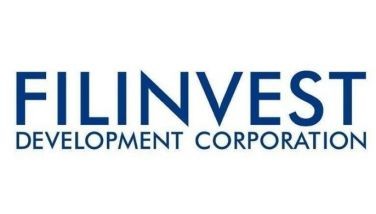Gov’t eyes Jexim funding for power sector reforms
October 20, 2006 | 12:00am
The government is eyeing possible funding from the Japan Export Import Bank (Jexim) for its power sector reform program as discussions started on the 27th Japan yen loan package.
Finance officials disclosed yesterday that the government has officially asked the government of Japan to assist in the implementation of the program, made even more critical by imminent power shortage by 2008.
According to the Department of Finance (DOF), the Philippine government officially inquired on the possibility of Japanese participation in financing the program.
Finance Undersecretary Robert Tan said one of the possible mechanism was for a co-financing arrangement between Japan and the Asian Development Bank (ADB) which has already expressed interest in the program.
"But this might not go under the yen loan facility because that is official development assistance," Tan said. "If it will be a co-financing arrangement, it might go through the exim bank but the Japanese government will still be the principal party."
According to Tan, the ODA mission from Japan is expected to arrive this month to begin evaluation of the projects so far listed under the 27th yen loan.
"There already is a line-up such as environmental mitigating measures, for mass transit, arterial road construction and there are also industrial activities there," he said.
Finance Secretary Margarito B. Teves said the improvements in the Arroyo administration’s fiscal budget had given the government more elbow room in seeking official development assistance (ODA) since it would have more flexibility in providing counterpart funding.
ODA projects are usually only partially funded by the ODA donor and a portion is funded by the National Government. The idea behind counterpart financing is to ensure that the receiving government had enough stake in the program to make it succeed.
Government is hoping to get Japanese participation in Phase 2 of the power sector program. Phase 1 of the program involved direct funding through a loan to the National Government and support for the bond flotation of the Power Sector Asset and Liabilities Management Corp (PSALM).
Phase 2 of the program, according to Tan, would involve the establishment of the power sector marketplace that would complete the deregulation of the power sector. It would allow energy users to integrate with the wholesale spot market and the government could provide insurance mechanisms in case of failed transactions.
The YLP is the country’s biggest source of ODA, mainly coming through the Japan Bank for International Cooperation (JBIC) which accounts for 61 percent of total ODA; followed by Asian Development Bank with 14 percent and the World Bank with 13 percent.
Finance officials disclosed yesterday that the government has officially asked the government of Japan to assist in the implementation of the program, made even more critical by imminent power shortage by 2008.
According to the Department of Finance (DOF), the Philippine government officially inquired on the possibility of Japanese participation in financing the program.
Finance Undersecretary Robert Tan said one of the possible mechanism was for a co-financing arrangement between Japan and the Asian Development Bank (ADB) which has already expressed interest in the program.
"But this might not go under the yen loan facility because that is official development assistance," Tan said. "If it will be a co-financing arrangement, it might go through the exim bank but the Japanese government will still be the principal party."
According to Tan, the ODA mission from Japan is expected to arrive this month to begin evaluation of the projects so far listed under the 27th yen loan.
"There already is a line-up such as environmental mitigating measures, for mass transit, arterial road construction and there are also industrial activities there," he said.
Finance Secretary Margarito B. Teves said the improvements in the Arroyo administration’s fiscal budget had given the government more elbow room in seeking official development assistance (ODA) since it would have more flexibility in providing counterpart funding.
ODA projects are usually only partially funded by the ODA donor and a portion is funded by the National Government. The idea behind counterpart financing is to ensure that the receiving government had enough stake in the program to make it succeed.
Government is hoping to get Japanese participation in Phase 2 of the power sector program. Phase 1 of the program involved direct funding through a loan to the National Government and support for the bond flotation of the Power Sector Asset and Liabilities Management Corp (PSALM).
Phase 2 of the program, according to Tan, would involve the establishment of the power sector marketplace that would complete the deregulation of the power sector. It would allow energy users to integrate with the wholesale spot market and the government could provide insurance mechanisms in case of failed transactions.
The YLP is the country’s biggest source of ODA, mainly coming through the Japan Bank for International Cooperation (JBIC) which accounts for 61 percent of total ODA; followed by Asian Development Bank with 14 percent and the World Bank with 13 percent.
BrandSpace Articles
<
>
- Latest
- Trending
Trending
Latest
Trending
Latest
Recommended
March 31, 2025 - 12:00am


























